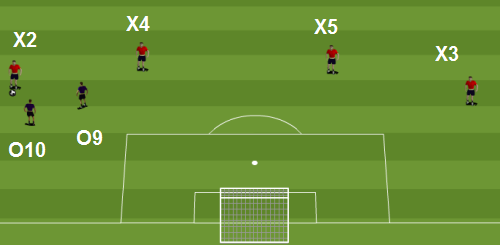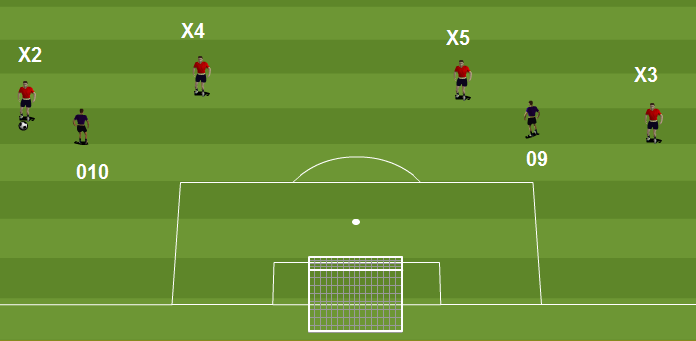DEFENDING FROM THE FRONT
Defending in soccer is often seen as the primarily responsibility of the goalkeeper and the back line. However, defending is a group effort and all great teams start defending from the front players back. Whereas in youth soccer you will encounter players who believe that a forward should wait to “be in the right position” when teammates win the ball, this is absolutely the wrong attitude for a player to take.
Beyond the fact that you defend with two or more less players if your forwards adopt this attitude of complacency on defense, it conveys an element of selfishness and desire for teammates to do the hard work, while they join in the game as and when they feel like it.
To teach defending properly, vociferously praise the work youth soccer players put in to win the ball back. Create a “we are all in it together” mentality, and a pride on being tough to play against. Not only does this have benefits in terms of increased individual and group mentality, but it also fosters an increased group cohesion and team pride.
When you look at world class goal scorers such as Wayne Rooney, David Villa and Carlos Tevez the first thing that comes to mind is the goals and highlight reels we see plastered all over the television. However, scratch beneath the surface and you will see a massive work rate and very good defensive ability in all these players.
If you get the opportunity, show your young soccer players clips and footage of these players in action, role models can be powerful, and they should see some of the world’s best goal scorers putting in huge defensive efforts.
On a tactical level, you should also emphasize how valuable turnovers in the attacking third are to your soccer team. If a defender wins a tackle, he prevents an opposition scoring opportunity, and starts an attack by passing up to midfielders. However, when a forward wins a tackle, he is immediately through on goal as he has dispossessed the last line of defense.
SHAPE
The defensive shape of your team is important when you are establishing the defensive mentality of defending from the front. If you are going to ask your forwards to pressure opposing defenders on their 18 yard line or near, then your defensive line must push up to halfway. If not, then you will find a large gap between your defensive line, midfield line and forward line. The more the amount of space between each unit on your team, the easier it will be for the opposition to find space and receive a pass.
When you have two forwards, it is important that the pair work as a unit defensively. If both forwards just run to pressure the ball then they can burn energy, and also leave an easy out for the opponent. In diagram A below, the danger of forwards chasing the same ball is shown. Coachfx
Diagram A

In diagram A the defensive player W2 is under a lot of pressure, but a switch ball cross field to X3, either direct or via the center backs is a very easy option. When X3 gets possession of the ball he will be under no pressure, as the forwards cannot cover the 40 yards in time. As a result, X3 will be allowed to dribble up the field and create an overlap situation for your opponent.
In diagram A, if one of the midfielders on your team pushes up to cover X3, it will leave space for X3 to pass to an open teammate further up the field. Diagram B illustrates how a slight difference in positioning can make your forwards more effective when defending. Coachfx
Diagram B

In diagram B, forward O10 is applying pressure to X2 who is in possession of the ball. O10 is both pressuring the ball and positioning himself to cut off the option of an easy pass to X4. X2 can pass forward, and O10 requires the support of his left midfielder to prevent an easy direct forward pass. O9 is in position to easily shut down O5 from receiving a pass, and is also positioned to intercept a cross field ball to X3.
